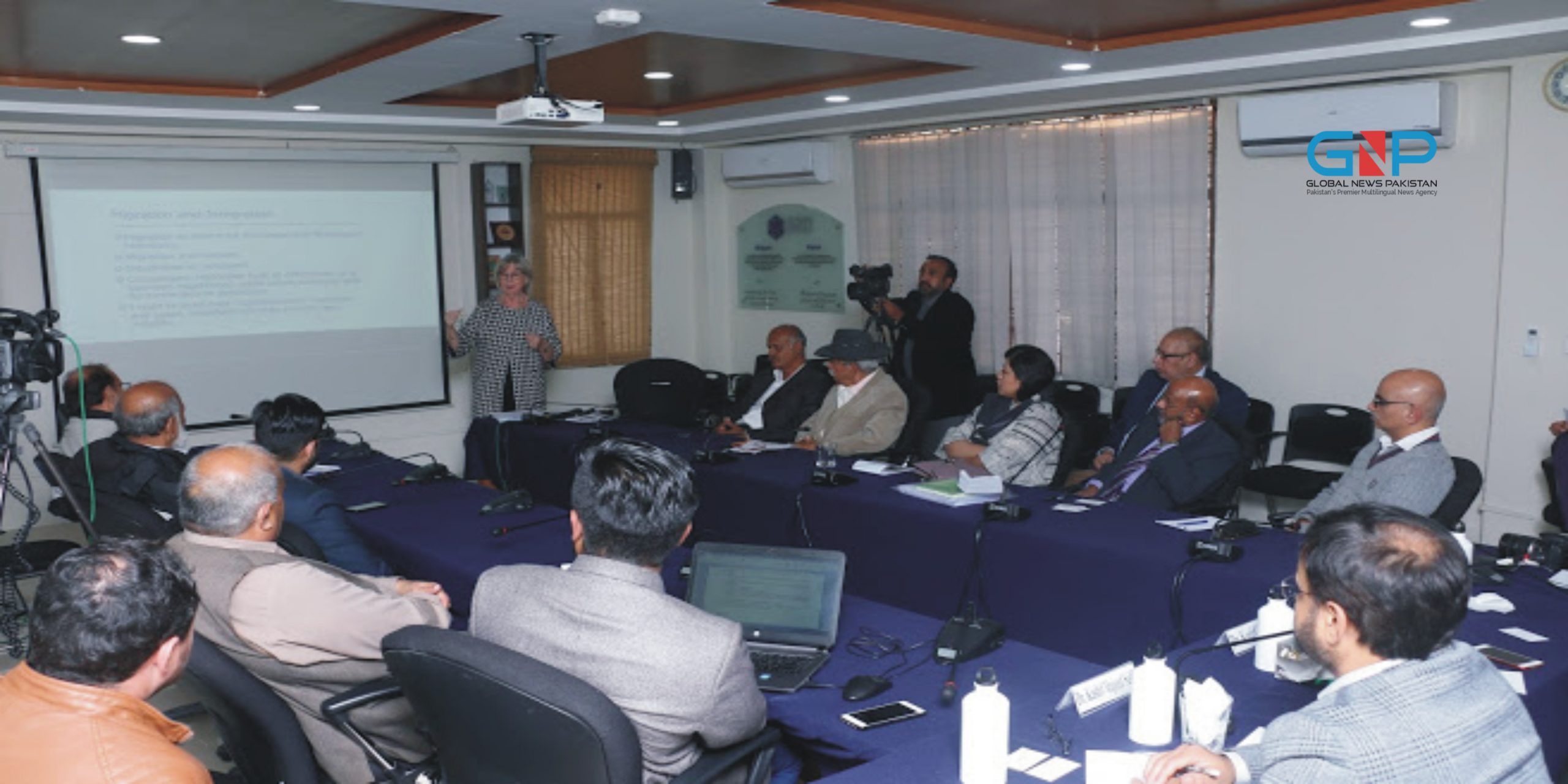Islamabad, 18 November 2019): Norwegian historian, Dr. Kari G. Hempel in her lecture on Monday said that Norway overtimes has become more open society and encourage immigrants of different religions and beliefs to integrate and adjust to the Norwegian culture. She said in many cases immigrants have invigorated Norwegian religious communities and helped make religion a more visible element in the Norwegian society.
The distinguished lecture titled “Migration, Integration and the Importance of Religion in the Processes: The case of Norwegians in the United States and Pakistanis in Norway”, was organized by the Sustainable Development Policy Institute (SDPI), here at Islamabad. Dr. Kari G. Hempel (Ph.D. History) is an Associate Professor, Faculty of Arts and Education, University of Stavanger, Norway.

Dr. Hempel said that as of 2019, there are 38000 Norwegian-Pakistani people in Norway, 21000 immigrants and 17000 Norwegian-born descendants. She said that the first Pakistani immigrant group came in the late 1960s as migrant workers when immigration policy was liberal. Many Pakistanis have succeeded very well in the choice of academic education and some Pakistanis have succeeded with participation in public, political life, including members of the parliament, she highlighted. The first mosque in Norway was built in 1974 in Oslo also by a Pakistani Muslim, known as the Islamic Cultural Center (ICC), she added.
Dr. Hempel said that religious plurality has become a global phenomenon, where people migrate with their religious or non-religious convictions. “There are many reasons to migration; People migrate as a result of persecution, including religious persecution, as for the Norwegian Quakers. People may also want to spread a religion and migrate for that reason,” she said adding almost 30 percent of the population in Norway, around one million out of 5.2 million, is of immigrants from different region and religions. She said that the percentage of organized Muslims has increased in Norway from 10% in 1980, 50% in 1990, and 70% in 2003. Now, there are more than 250,000 Muslims in Norway. For immigration to be successful, it is important for immigrants to be integrated and to avoid an ethnically divided society, she remarked.

Dr. Hempel also compares the historic exodus of Norway to the United States (US), during the period of 1820-1920, when at least 850,000 persons, out of two million, left Norway to the US. She said the migrants who left Norway was largely religiously monopolistic and there was no religious freedom, as only the Lutheran State Church was allowed. In America, the state welcomed immigrants of different denominations and many Norwegian immigrants were succeeded to buy a farm and many became craftsmen, carpenters and florists etc., whereas few achieved academic or political careers, she added.
While moderating the session Kashif Majeed Salik, Research Fellow, SDPI said that migration can be looked in multiple ways, such as burden to the economy of the destination country, as brain drain from the origin state, as opportunity in terms of human resource and in some cases as threat to the society in terms of different societal collision. He said it is the responsibility of the state that how it facilities the integration of the migrants. (GNP)

